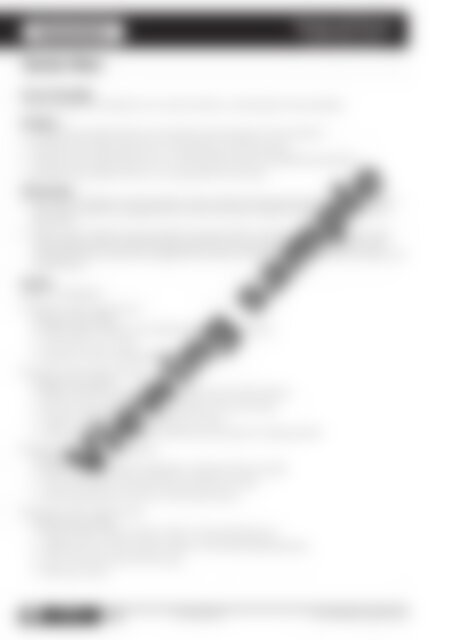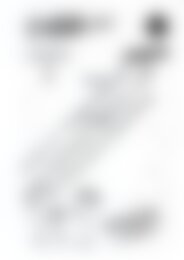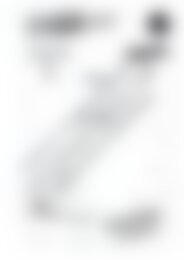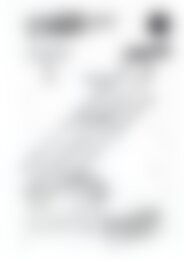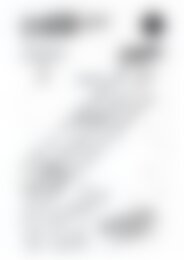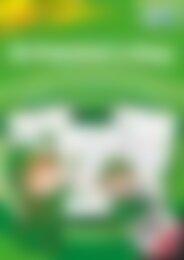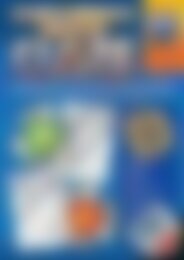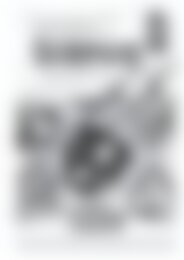PR-6170RUK Science A STEM Approach - Primary 1
Create successful ePaper yourself
Turn your PDF publications into a flip-book with our unique Google optimized e-Paper software.
Assessment<br />
Energy and Forces<br />
HOW THINGS MOVE<br />
Teacher Notes<br />
<strong>Science</strong> Knowledge<br />
The way objects move depends on a variety of factors, including their size and shape.<br />
Indicators<br />
• Identifies three objects that roll, including toys with wheels or round surfaces.<br />
• Identifies three objects that slide, including objects with flat surfaces.<br />
• Identifies three objects that bounce, including balls and spring-loaded toys (optional).<br />
• Identifies three objects that spin, including spinners and cogs.<br />
Differentiation<br />
• Easier option—Page 61 requires pupils to draw a picture of three toys that roll, slide, bounce and<br />
spin. Pupils may be encouraged to find common classroom objects and test how they move to<br />
assist them.<br />
• Harder option—Page 62 requires pupils to write the names of three toys that move in each way—<br />
rolling, sliding, bouncing and spinning. Pupils then draw a picture of a toy that performs each<br />
movement. Pupils may be encouraged to find common classroom objects and test how they move<br />
to assist them.<br />
Answers<br />
Page 61 and Page 62<br />
1. Teacher check—Toys that roll<br />
Answers may include:<br />
• Types of balls—marbles, tennis balls, basketballs, beach balls<br />
• Toy vehicles—cars, trucks,<br />
• Bicycles, scooters, skateboards or roller skates<br />
2. Teacher check—Toys that slide<br />
Answers may include:<br />
• Blocks—wooden construction blocks, foam blocks, Duplo® blocks<br />
• Role-play toys—plastic cooking sets, plastic furniture and dolls<br />
• Figurines—plastic or wooden animals or humans<br />
• Puzzles—wooden or cardboard traditional puzzle pieces or sliding puzzles<br />
3. Teacher check—Toys that bounce<br />
Answers may include:<br />
• Rubber balls—tennis balls, basketballs, netballs and bouncy balls<br />
• Plastic balls—beach balls, golf balls and table tennis balls<br />
• Spring-loaded toys—animal or monster pop-up toys<br />
Viewing sample<br />
4. Teacher check—Toys that spin<br />
Answers may include:<br />
• Spinning tops—metal, wooden, plastic or self-created spinners<br />
• Fidget spinners—metal, wooden, plastic or self-created fidget spinners<br />
• Gear construction toys that use cogs<br />
• Merry-go-rounds<br />
60<br />
<strong>Science</strong>:<br />
A <strong>STEM</strong> AP<strong>PR</strong>OACH<br />
Infants 978-1-912760-14-5 Prim-Ed Publishing – www.prim-ed.com


